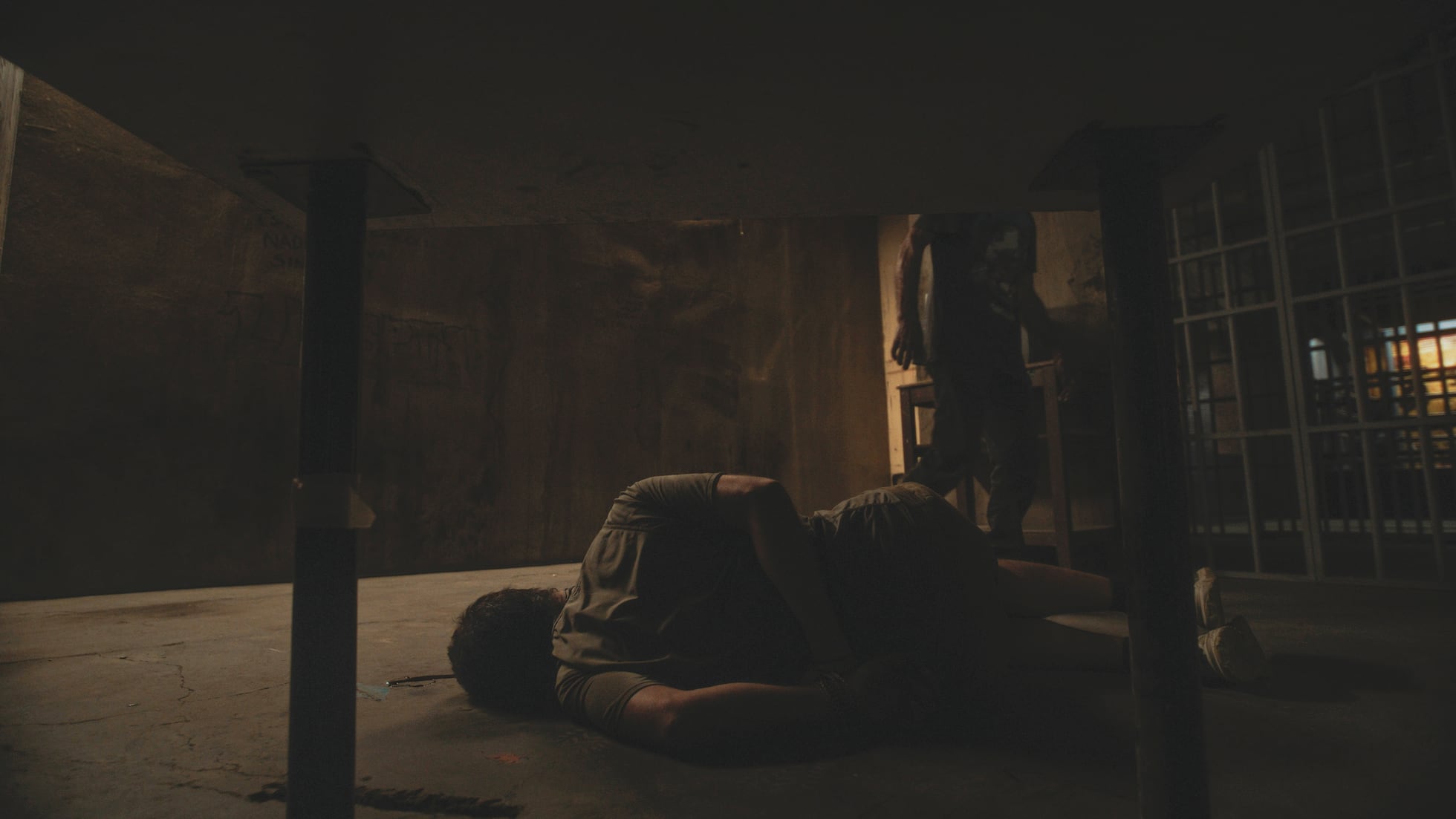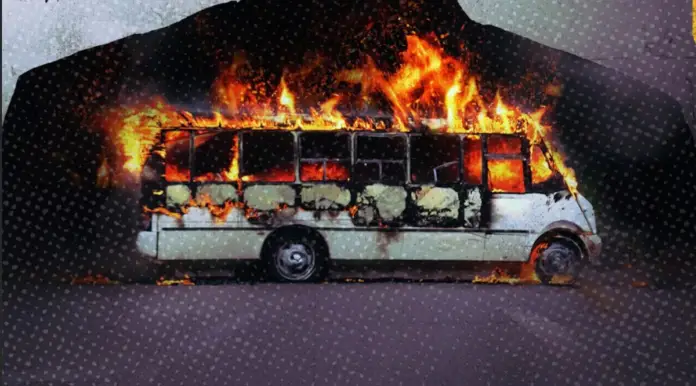On October 17, 2019, the temperature was 33 degrees Celsius in Culiacán, Sinaloa. Residents there described it as “a pleasant day.” However, that date would later be remembered as Black Thursday. Starting at 12:00, a failed operation by the Mexican Army resulted in hours of terror and uncertainty. The sound of high-caliber weapons was heard throughout the city, vehicles were set on fire, and gunmen were shooting from rooftops, motorcycles, and cars. The order was to reach the community of Jesús María, a town north of Culiacán, to capture one of Joaquín “El Chapo” Guzmán’s sons. However, upon arrival, they were surprised. They didn’t go after Iván Archivaldo or Jesús Alfredo, considered high-ranking operatives within the Sinaloa Cartel. The target: Ovidio Guzmán, known as “El Ratón,” the youngest of the brothers.
“We were all surprised to see Ovidio’s arrest. Why did they arrest him?” asks a witness from that day. This is one of the questions that the documentary series Culiacanazo: Heirs of the Narco seeks to answer from the depths of the Sinaloa Cartel. Available on the Max platform since March 13, it chronicles the details of Ovidio Guzmán’s two captures (one failed and one successful), the fentanyl explosion, and how the criminal organization operates after El Chapo’s capture.
The series, with two episodes already available and two more to go—the third and final premiere on March 23 and April 7, respectively—seeks to pave the way and put the finishing touches on the web of misinformation and the political consequences unleashed by the Culiacanazo.
Likewise, through extensive research—which lasted two years—the production gathered previously unseen footage from witness recordings, Army body cameras, and even audio recordings.
“The challenge was how to integrate these images into the story without overly offending the viewer’s feelings; because at the same time, we had to show reality as it was. It was a task of thinking and rethinking the editing to maintain the pace without falling into sensationalism, but at the same time telling the truth,” explains director Fátima Lianes.

From El Chapo’s low-profile “loving son” to “Fentanyl King”
The series puts one of the spotlights on the enigma of Ovidio Guzmán. Considered a “loving son” by his father, who, according to a fragment of the documentary, “always tried to get him out of crime.” Despite growing up, as the newspaper Reforma explained, in Mexico City’s Jardines del Pedregal neighborhood, an upper-class neighborhood, and attending CEYCA, one of Mexico City’s most expensive private Catholic schools—run by the Legionaries—El Ratón’s family weighed heavily on him, and he became a precocious drug trafficker at 18 years old.
And not just any drug trafficker. One whom the United States Drug Enforcement Administration (DEA) had its eye on. Despite the fact that the Mexican Army viewed Ovidio as the weakest link in the criminal organization, “because he was the youngest, the least violent, and the one with the lowest profile,” says investigative journalist Luis Chaparro in a segment. He is not a “psychopath” or “sociopath.” These are adjectives that often describe the temperament of Iván Archivaldo, his older brother and head of Los Chapitos, one of the factions that competes with the Sinaloa Cartel against the followers of El Mayo Zambada.
Even the criminal organization itself was surprised that they were after Ovidio. The series, through various testimonies, recounts that the DEA linked El Ratón to the manufacture of fentanyl around 2015. An anonymous cartel member, who has been part of the organization for 15 years, says that this drug, “100 times more potent than morphine and 50 times more potent than heroin,” arrived in Sinaloa in 2013.
Ovidio entered the business as an investor, since “you have to invest money to continue buying, moving, and trafficking.” “Ovidio Guzmán became the person in charge of the production of this synthetic drug. He was responsible for bringing in the chemical precursors, manufacturing, and transporting fentanyl to the United States,” says Jesús Bustamante, independent journalist and consultant for Culiacanazo: Herederos del Narco.
The same anonymous cartel member explains that for $400,000, approximately 350 kilos of fentanyl can be produced. Each kilo can be sold in New York or Los Angeles for $35,000.
Through a security breach within the Sinaloa Cartel, the DEA learned not only the intentions of the fentanyl trafficking operation, but also its scale. Ovidio’s clients in California; the importance of the ports of Lázaro Cárdenas, in Michoacán, and Manzanillo, in Colima; as well as Iván Archivaldo’s intentions to set up a command center in Mexico City. Details that also appear in the Chicago court files of the case against El Ratón.
“The United States knows everything about Los Chapitos because they have them completely infiltrated. Their faction is a cheese with holes in every corner,” says the cartel member. Thus, the DEA managed to infiltrate three people and record Ovidio, investigative reporter Peniley Ramírez recounts in the documentary. It is for this reason, he notes, that he has earned the nickname “The King of Fentanyl” from Washington.
Although El Chapo’s heirs have denied, in a letter, having “ever” produced, manufactured, or sold fentanyl, Mike Vigil, head of international operations for the DEA (between 2000 and 2003), thinks differently: “This information has linked Los Chapitos and the Sinaloa Cartel as the largest manufacturers of fentanyl in the world.”
“A selection of many voices was made so that people could make their own reflections. We believe all the necessary figures are included, from former politicians, military commanders, citizens, journalists, analysts—in other words, a series of people are included who address the issue from their perspective and who also, obviously, reflect on what went right or wrong, what went wrong, what could have been avoided, and what we need to do to prevent this from happening again,” Bustamante affirms via video call.
The tentacles that emerge from this problem are long, and the scissors aren’t big enough. The escalation of drug-related violence in Mexico, reflected in the Culiacanazo and in every horrific incident that emerges daily, is still a debt that merits an explanation from the Mexican government to its people.
Source: elpais




